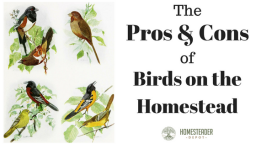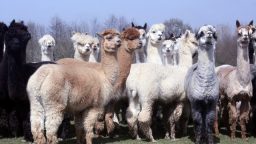Birds live everywhere, even in the middle of thickly populated urban areas birds build nests, hunt and scavenge for food, and raise their young.
So of course, there’s plenty of avian wildlife on any homestead, but are they a blessing, or a curse? Well, there’s a little bit of both. Here are some of the pros and cons:
Cons
Birds can definitely have a lot of cons for the busy homesteaders. As you grow your food, they’re also going to be looking for it on every inch of your homestead, and odds are, they’ll have their eye on your food.
Birds in the garden can be quite a pain, after all, scarecrows are more than just popular child’s book characters! Farmers have long tried to think up clever ways of keeping scavenging birds out of crops, and if you are gardening, you’re likely to be faced with the task of protecting veggies from hungry birds at some point.
They can also pose a risk to free range chicks, especially large broods where two or three stragglers might get left behind if their mother moves on to the next patch. They might try to steal their food and peck them in the process.
And all chickens, adults and babies alike, are at risk of getting swooped up by predatory birds, as can any other small animals like rabbits without enough protection in their enclosure.
There is also the messy issue of droppings. With a large bird population on your homestead, you might find them congregating on your structures, fences, or equipment, and accumulating quite a bit of droppings, that can be a drag to clean regularly, and can stain and even cause paint to peel or metal to rust if not cleaned regularly.
Pros
Fortunately, despite the handful of downsides lots of birds can have on a homestead, there are just as many, if not more, benefits.
Birds are an important part of the ecosystem over all, so even if there are issues they might cause for you, they’ll contribute to your homestead culture as well.
Birds are actually very helpful in keeping some bugs out of your garden, and eating many other insects as well. They also contribute to pollination, and even eat the seeds of many common weeds.
Watching their behavior, such as mating or migratory patterns can also tell you a lot about the natural seasonal changes and eco-system in your area, and it’s a great educational experience for kids as well to learn about the natural habitat of your homestead.
Birds might be a pain sometimes, but they’re definitely your friends. There’s lots of options out there for ways to keep them out of your garden or off your things, and you can make them feel welcome in other areas by providing bird baths and bird feeders for them. Appreciate your avian friends, they’re certainly your ally on the homestead.
If you enjoyed this, you might also like….





